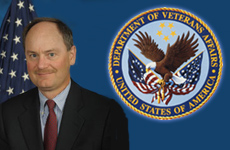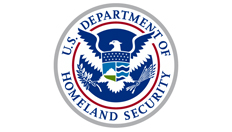IT
-
This week, Roger Baker, Chief Information Officer at the Veterans Affairs Department, talks with host Jason Miller about turning around IT processes within the agency. September 30, 2010
September 28, 2010 -
Troubled IT projects are getting top-level attention. The kind of attention CIOs would like to avoid. Interior\'s CIO Bernard Mazer gives us a progress report.
September 24, 2010 -
When the Office of Management and Budget released its hit list of 26 late and over-budget IT projects this week, not only federal agencies were affected. Trey Hodgkins, vice president for national security and federal procurement policy at TechAmerica, joins the Federal Drive with some answers.
August 26, 2010 -
August 12th, 2010 at 11 AM How does one assure trust in Cyberspace? As citizens, government, and business enterprise increase the amount of information that is shared online, fundamental questions arise around security requirements, data and identity management, and infrastructure. Trusted online environments can reduce costs, expand services, and are critical to protecting how, and to whom, information is shared. Securing identities in transactions is an essential component to building trusted online systems and a critical priority for both business and government. As online information sharing and collaborative services evolve between people and technologies, will trust emerge as the next \"Killer App\"?
August 02, 2010 -
Jeffrey Zients has been the federal chief performance officer for a little over a year now.
July 15, 2010 -
The Office of Management and Budget is taking aim at approximately 30 agency financial management modernization systems. Part of the new oversight is a Financial Systems Advisory Board made up of CFOs and CIOs across the government. The administration\'s goals are lower costs and improve performance by addressing long standing project problems.
July 12, 2010 -
A new study that finds 80-percent of I-T managers expect network-born threats to increase over the next year. Perhaps even more troubling, more than half of managers told netForensics their organization was not budgeting enough, or recruiting enough new talent, to counter any added cyber-threats. Almost 25-percent of respondents said they saw a decrease in staff size in the last year. More than half of the managers polled did however say their organization was more secure now than it was a year ago.
July 09, 2010 -
Is it easier to get a progressive bill past a Senate filibuster than it is to kill a failed government IT project?
June 30, 2010 -
Two authors share best practices and discuss their new book.
June 09, 2010 -
Federal IT managers are under greater pressure than ever before to control costs while increasing energy efficiency and maintaining security. Under the leadership of Federal CIO Vivek Kundra, federal agencies have been tasked with complying with the recent OMB Federal Data Center Consolidation Initiative, including the adoption of cloud computing and virtualized IT environments. Are agencies following through with these necessary upgrades, or are they falling behind the times? Tune into this panel to hear experts from GTSI, Oracle, and the Government Business Council (GBC), the research division of Government Executive Media Group, discuss the results of a recent in-depth study into the transformation of IT environments at federal agencies.
April 20, 2010 -
February 17th, 2009 Performance is one of the hallmarks of the Obama administration’s IT agenda. Although he’s been on the job for less than six months, Homeland Security Department Chief Information Officer Richard Spires is…
February 18, 2010




